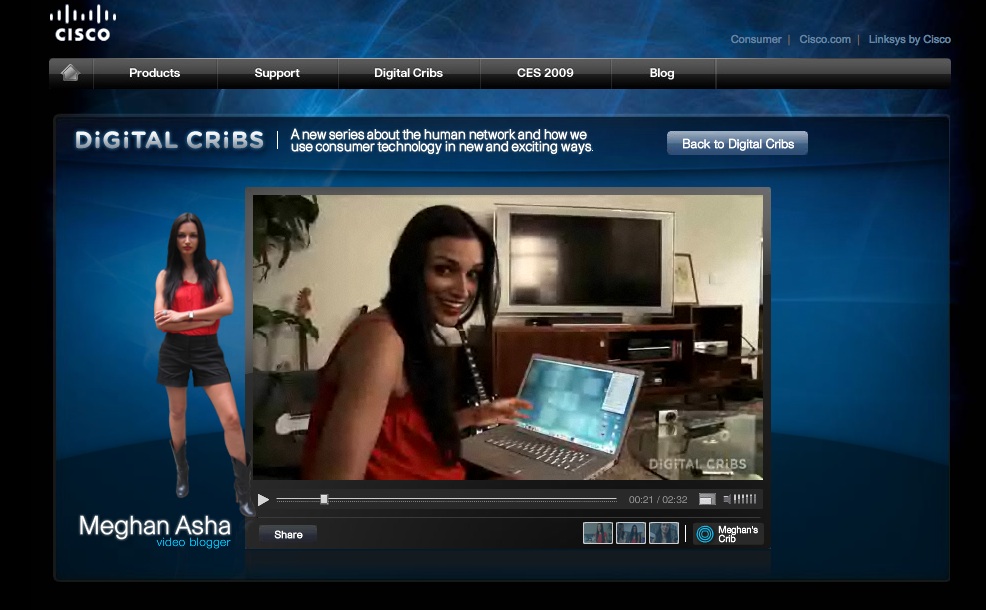Enterprise gets hip: embraces video as business tool

The site is using video to offer a peek into the networked lives of cool people like basketball star Shane Battier or big city video blogger Meghan Asha. They're using networking technology to shoot a pic or video clip from an iPhone and wirelessly upload it to a blog or create an ultimate living room, complete with DVR, surround sound, HDTV and satellite radio.

Digital Cribs is the company's way of showing, not explaining, what can be done with a network. There are no diagrams or schematic charts or even little cloudy pictures to represent the Web. There are only real life scenarios. To reach the non-IT types - and eventually turn them into customers - a company like Cisco has to show that networking isn't that complex process that happens in the server room at the office. Web video is the tool that allows them to do that. Aren't they're not alone.
Dell has incorporated a video feature - and YouTube channel - into its Marketing 2.0 campaign called Digital Nomads. The idea is to use social media tools such as Facebook and LinkedIn alongside crowd-source white papers, blogs and media galleries to showcase how laptop computers enable us to be a virtual/mobile workforce. It's not just video but that's an important element of it because, like Cisco, it simply - and creatively - drives home the message: in this case, mobile computing enhances worker productivity.
Brightcove this month also launched Brightcove 3, an updated online video platform that includes new tools that allow customers to customize video portals, such as what Sun has done with ChannelSun. That site features quality videos - not the YouTube stuff - that range from highlights of a particular product or insight into business trends to one-on-one chats from with executives and other tech leaders at trade shows.
Video, of course, isn't new. Companies, however, are quickly realizing that online video isn't limited to teenage antics on YouTube or replays of The Office on NBC's Hulu. There are legitimate uses in the enterprise and, increasingly, there are options on how to create a video portal that meets the needs of individual companies.